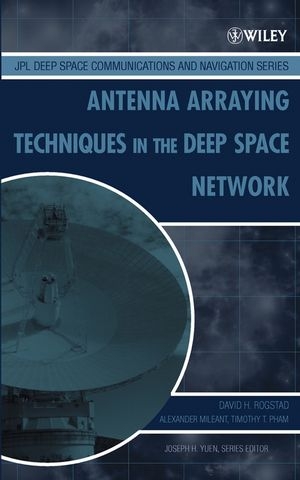
Antenna Arraying Techniques in the Deep Space Network
Wiley-Interscience (Verlag)
9780471467991 (ISBN)
An introduction to antenna Arraying in the Deep Space network
Antenna arraying is the combining of the output from several antennas in order to improve the signal-to-noise ratio (SNR) of the received signal. Now implemented at the Goldstone Complex and other Deep Space Network (DSN) overseas facilities, antenna arraying provides flexible use of multiple antennas to increase data rates and has enabled NASA's DSN to extend the missions of some spacecraft beyond their planned lifetimes.
Antenna Arraying Techniques in the Deep Space Network introduces the development and use of antenna arraying as it is implemented in the DSN. Drawing on the work of scientists at JPL, this timely volume summarizes the development of antenna arraying and its historical background; describes key concepts and techniques; analyzes and compares several methods of arraying; discusses several correlation techniques used for obtaining the combined weights; presents the results of several arraying experiments; and suggests directions for future work.
An important contribution to the scientific literature, Antenna Arraying Techniques in the Deep Space Network
* Was commissioned by the JPL Deep Space Communications and Navigation Systems (DESCANSO) Center of Excellence
* Highlights many NASA-funded technical contributions pertaining to deep space communications systems
* Is a part of the prestigious JPL Deep Space Communications and Navigation Series
The Deep Space Communications and Navigation Series is authored by scientists and engineers with extensive experience in astronautics, communications, and related fields. It lays the foundation for innovation in the areas of deep space navigation and communications by disseminating state-of-the-art knowledge in key technologies.
DAVID H. ROGSTAD, a principal engineer, was a technical group supervisor, and a member of the team that contributed to the saving of the Galileo Mission after its spacecraft antenna failure. ALEXANDER MILEANT is a senior engineer currently working on the design of the DSN Prototype Array. TIMOTHY T. PHAM is a technical group supervisor as well as the DSN Chief System Engineer.
Foreword. Preface.
Acknowledgments.
Chapter 1. Introduction.
Chapter 2. Background of Arraying in the Deep Space Network.
Chapter 3. Arraying Concepts.
Chapter 4. Overview of Arraying Techniques.
Chapter 5. Single-Receiver Performance.
Chapter 6. Arraying Techniques.
Chapter 7. Arraying Combinations and Comparisons.
Chapter 8. Correlation Algorithms.
Chapter 9. Current Arraying Capability.
Chapter 10. Future Development.
Appendix A. Antenna Location.
Appendix B. Array Availability.
Appendix C. Demodulation Process.
Appendix D. Gamma Factors for DSN Antennas.
Appendix E. Closed-Loop Performance.
Appendix F. Subcarrier and Symbol-Loop SNR Performance.
Appendix G. Derivation of Equations for Complex-Symbol Combining.
General Reference List.
Acronyms and Abbreviations.
| Erscheint lt. Verlag | 24.6.2003 |
|---|---|
| Reihe/Serie | JPL Deep-Space Communications and Navigation Series |
| Sprache | englisch |
| Maße | 160 x 243 mm |
| Gewicht | 386 g |
| Themenwelt | Technik ► Elektrotechnik / Energietechnik |
| Technik ► Nachrichtentechnik | |
| ISBN-13 | 9780471467991 / 9780471467991 |
| Zustand | Neuware |
| Informationen gemäß Produktsicherheitsverordnung (GPSR) | |
| Haben Sie eine Frage zum Produkt? |
aus dem Bereich


